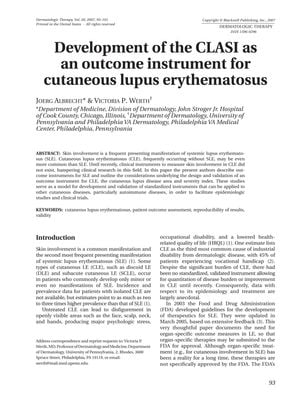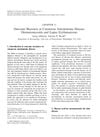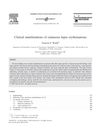Development of the CLASI as an Outcome Instrument for Cutaneous Lupus Erythematosus
March 2007
in “
Dermatologic Therapy
”

TLDR The CLASI is a reliable tool for measuring the severity of cutaneous lupus erythematosus.
In 2007, Albrecht and Werth introduced the Cutaneous Lupus Erythematosus Disease Area and Severity Index (CLASI) to address the need for a standardized outcome instrument for assessing cutaneous lupus erythematosus (CLE). The CLASI, which measures both disease activity and damage, includes assessments of various skin and hair symptoms, such as erythema, scale/hypertrophy, mucous membrane involvement, acute hair loss, dyspigmentation, and scarring alopecia. It was validated with the help of experienced dermatologists and showed excellent inter- and intrarater reliability. A clinical study with nine CLE patients demonstrated the CLASI's responsiveness, with activity score changes aligning with physicians' and patients' assessments. The development of the CLASI aimed to improve clinical research in dermatology by providing a reliable tool to quantify disease burden and improvement, and the authors encouraged the creation of similar instruments for other dermatologic conditions.



